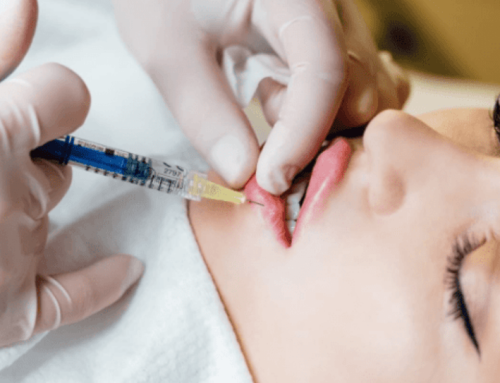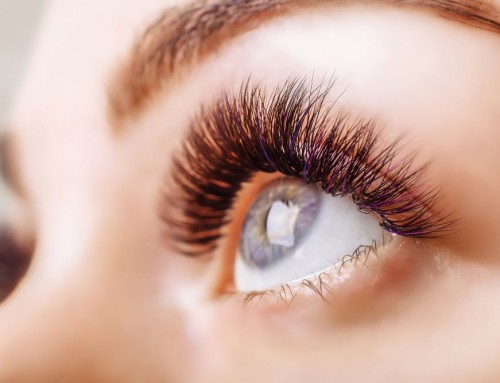Rhinoplasty Surgery: What To Expect Before, During & After
There are several reasons why patients choose to undergo a rhinoplasty procedure, or nose job. This surgery can smooth out bumps on the bridge of the nose, improve the appearance of nostrils, alter the nose size to provide a more optimal facial balance and correct a condition known as a deviated septum.
Septoplasty Vs. Rhinoplasty
A deviated septum refers to an abnormality in the wall (nasal septum) between your nasal passages. This wall is meant to be perfectly centered between the two nasal passages, but quite often, the wall leans to one side, and this can cause breathing difficulties. The technical term for deviated septum surgery is septoplasty, and it can be part of your total rhinoplasty procedure.
If you find it difficult to breathe through your nostrils or just one nostril, this could be a sign of a deviated septum. People with a deviated septum also sometimes breathe loudly during sleep and some even must sleep on a particular side to help with breathing in general. Surgery can make life much more comfortable for those with a deviated septum.
Many patients will undergo a nose job both to correct a deviated septum and to improve the look of their nose, so they will undergo a septoplasty and rhinoplasty at the same time. Of course, some patients simply want to change the look of their face, and a nose job can be an excellent option. A plastic surgeon can improve the position, size and profile of your nose, creating a pleasing facial balance.
Is Rhinoplasty Covered By Insurance?
Usually, rhinoplasty surgery is not covered by insurance. However, if you have a deviated septum that is causing breathing issues and discomfort, a portion of the surgery, the septoplasty, may be covered. Not all rhinoplasty surgeries include a septoplasty procedure, as not all patients have a deviated septum.
Additionally, if you have suffered a broken nose and this has affected the look of your nose or impaired your breathing, reconstructive surgery might be covered. Keep in mind that nose reconstruction surgery is a more complex type of surgery than a nose job or cosmetic rhinoplasty.
Can You Fix Bad Nose Jobs?
We do have patients that come to us after a rhinoplasty procedure that didn’t produce the desired results. If you have had a previous nose job and were dissatisfied with the results, give us a call and we can set up a consultation. In many cases, we might be able to “fix” the issue and achieve your desired look.
Rhinoplasty: The First Step
The first step for rhinoplasty includes a consultation with Dr. Thaxton. During the consultation, you will discuss your goals for the procedure as well as discussing your overall health and any possible risk factors.
A good candidate for a nose job is a physically healthy person and one that has realistic expectations about the procedure. We also typically don’t perform rhinoplasties on minors, as it is best to wait until growth is complete. Additionally, we often don’t recommend rhinoplasty for smokers, as smoking inhibits the immune system and makes it much harder for your body to heal after surgery. Still, if you do want a nose job, you could quit smoking, and this could be a great opportunity to enjoy a new look and better overall health.
Additionally during your consultation, we will measure your face and take some photographs. We will discuss the possible outcomes of the surgery and discuss the procedure itself. Feel free to bring some paper and a pen to jot down notes, and bring in any questions you might have. It’s easy to forget questions during the consultation, so write them down so that you have all of the information you need about the surgery, recovery, cost, etc.
Rhinoplasty: The Procedure
Typically before the procedure, we ask that you avoid taking any anti-inflammatory drugs, such as aspirin, as well as some supplements, as this can put you at risk of excess bleeding during surgery. Some other medications may need to be adjusted, as well, so be sure to inform Dr. Thaxton and his staff about all of the medications and supplements you are taking currently.
A nose job is an outpatient procedure, but we do use anesthesia, so you will need to have someone there to bring you home after surgery. Once the anesthesia has been administered, your surgeon will make incisions and begin reshaping the structure of your nose. This might include the removal of some cartilage or bone or even the addition of some cartilage.
If our rhinoplasty includes the correction of a deviated septum, your surgeon will complete that portion of the surgery after the reshaping portion has been completed. Then the surgeon will close the incision. We will then put a splint in place to keep the bone structure from moving during recovery, and gauze or bandages also will be put into place to protect the incisions.
Rhinoplasty Swelling & Pain: What To Expect
Swelling and discomfort are to be expected after we complete the procedure. Many patients also will see bruising. The swelling will last for about two weeks, sometimes a bit more and sometimes a bit less. In some cases, mild swelling could persist for many months, due to fluid retention, but eventually this will subside. The pain should subside more quickly than the swelling, usually after just a few days. Keep in mind that touching your nose still might be slightly uncomfortable for several weeks or even months after the procedure.
We may prescribe medication to reduce swelling and possibly medication to prevent infection. Be sure to take this medication according to the instructions. Keeping your head elevated can be one of the best ways to reduce swelling and discomfort. This keeps fluid from building up in the nose. We highly recommend that you avoid bending over and lying flat as much as possible in the weeks following surgery. For instance, sleep in as elevated a position as possible after the surgery and for the first week or so.
Applying ice or a cold compress also can reduce swelling, especially in the few days after surgery. After the splint is removed, we often will put special nasal tape on the nose to keep the structure as still as possible. We will teach you how to put the tape properly in place, and it’s crucial that you follow these instructions as they will provide you with the best possible outcome.
How To Get Started
If you are interested in learning about your rhinoplasty options, give us a call at Thaxton Plastic Surgery at any time. In regards to COVID-19 and social distancing, we have new procedures in place to keep our staff and patients safe. We are spacing out appointments, wearing masks (staff and patients), doing temperature checks, disinfecting frequently, etc. In addition, we are still offering Telemedicine consultations.
We are taking all precautions to ensure a healthy, safe office!





